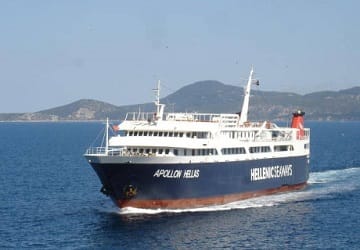
-
Recent Searches
Recent Searches
- Travel Alerts
- My Account
- Customer Service
-
United Kingdom
Mytilene to Kavala Ferry
The Mytilene Kavala ferry route connects Lesbos with Greece. Currently there is just the 1 ferry company operating this ferry service, Hellenic Seaways. The crossing operates up to 4 times each week with sailing durations from around 7 hours 10 minutes.
Mytilene Kavala sailing durations and frequency may vary from season to season so we’d advise doing a live check to get the most up to date information.
Average Mytilene Kavala Prices
Prices shown represent the average one way price paid by our customers. The most common booking on the Mytilene Kavala route is a car and 2 passengers.
Mytilene Guide
The ancient Greek city of Mytilene is the capital and port of the south east coast of the island of Lesbos, which lies in the north eastern Aegean Sea. The city's origins date back to the 11th century BC and has a number of neo-classical buildings, public and private, on display. Some of these buildings are the buildings of the Lesbos Prefecture, the old City Hall, the Experimental Lyceum and the various mansions and hotels located throughout the town. Dominating the port is the Baroque Church of Saint Therapon on which construction began in the 19th century and was completed in 1935.
The island of Lesbos has a land area of around 1,600 sq. km and has roughly 320 km of coastline, which makes it the third largest Greek island. The narrow Mytilini Strait separates it from the Turkish mainland.
Mytilene has a port with ferries to the nearby islands of Lemnos, Chios and Ayvalik and at times Dikili in Turkey. The port also serves the mainland cities of Piraeus, Athens and Thessaloniki.
Kavala Guide
The Greek city of Kavala is the capital and main port of the Kavala region and is built on the slopes of Mount Symvolo, and is regarded as one of the most picturesque cities in Greece. By analysing the archaeological artefacts found, the city is able to trace its history back to Prehistoric times. The city's original centre was restricted to the Panayia district which has been inhabited since the 7th century BC. At the beginning of the 16th century the city expanded and managed to maintain its new borders until 1870 although the city as can be seen today only really began to form after 1928.
The cities fortunes were in large part a result of its important location, its port and to its natural defences on the peninsular, on which the old city was built. Wandering around the city visitors will be struck by its neoclassical mansions and large tobacco warehouses which are a physical symbol of the city's recent past. In the “Mecca of tobacco” as Kavala was named in the past, thousands of tobacco workers earned their living.
From the city's port ferries operate to Agios Efstratios, Limnos, Lavrio, Kirikos, Chios, Karlovassi, Psara, Vathi and Mytilene.


